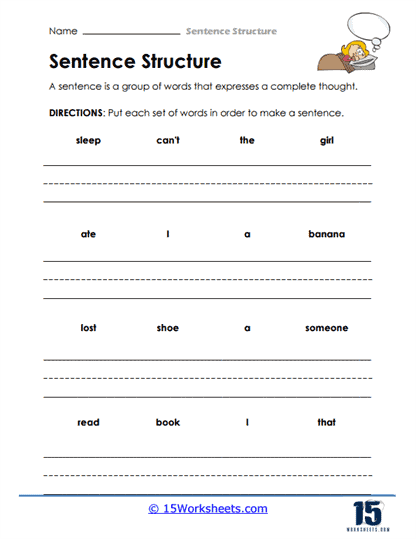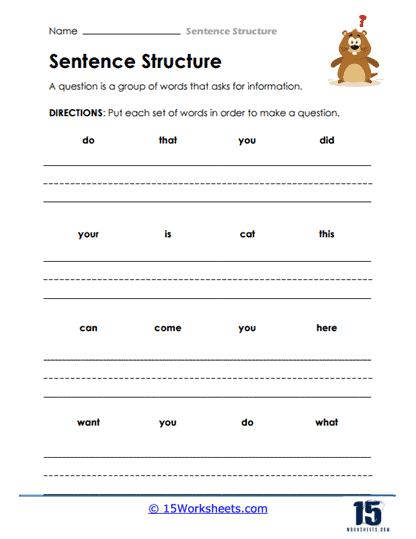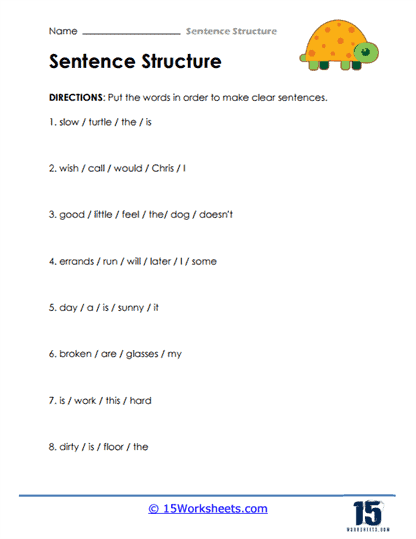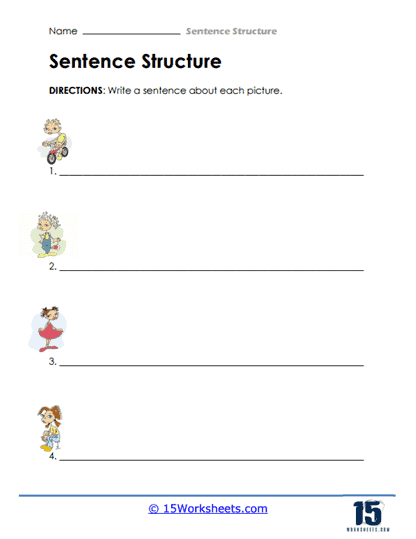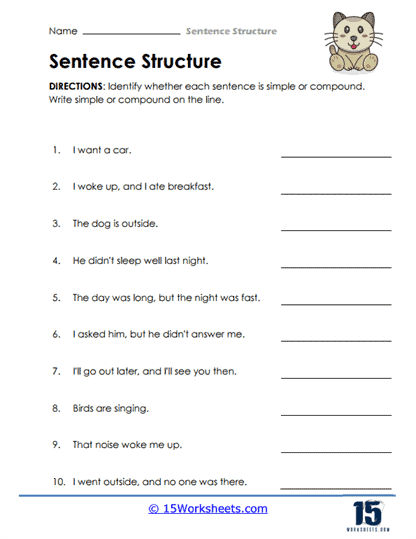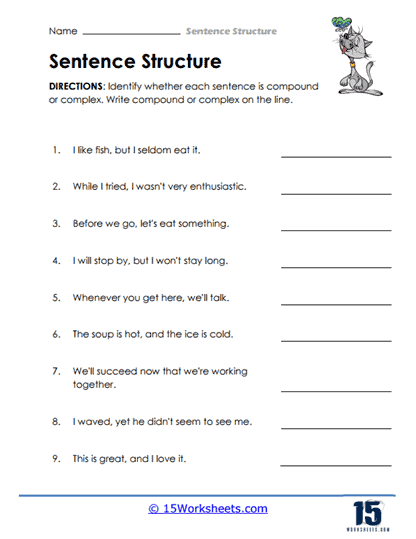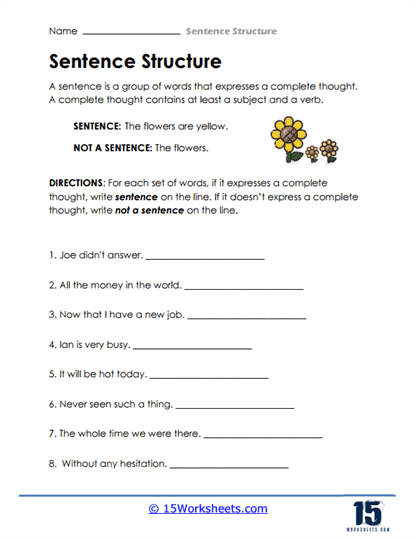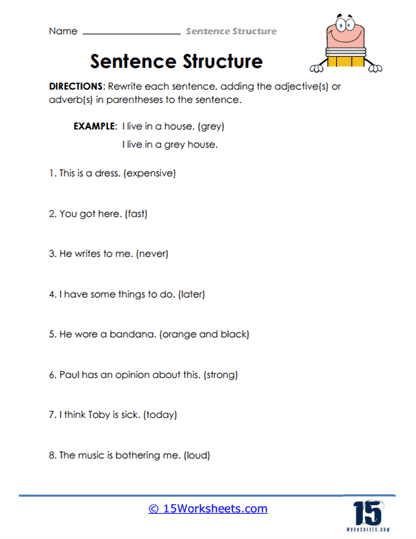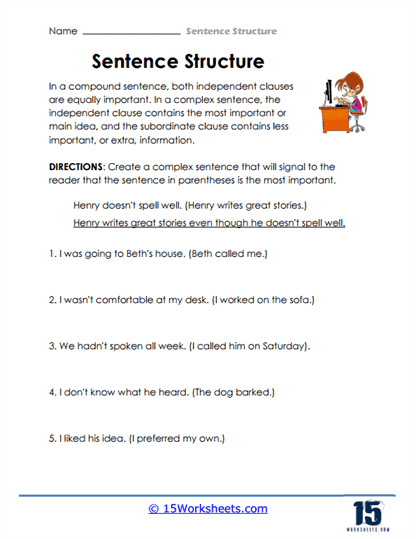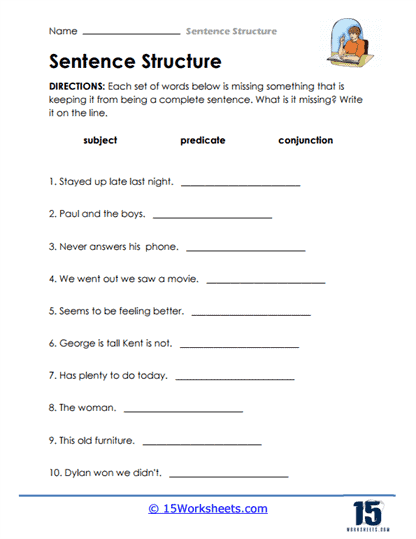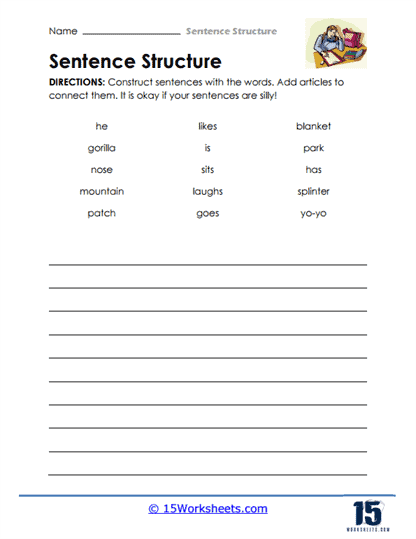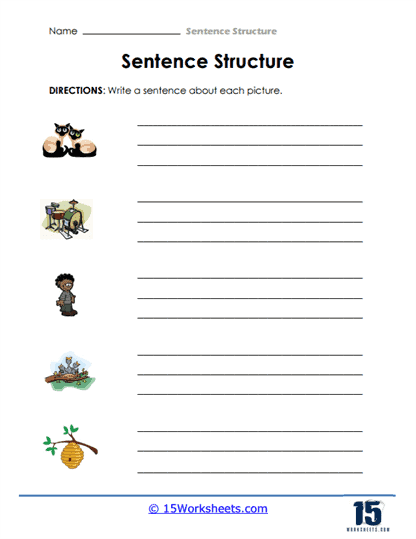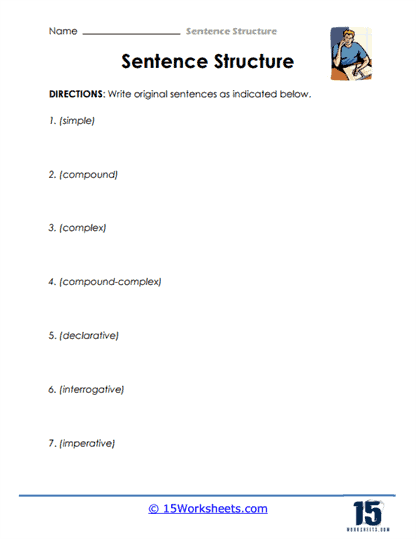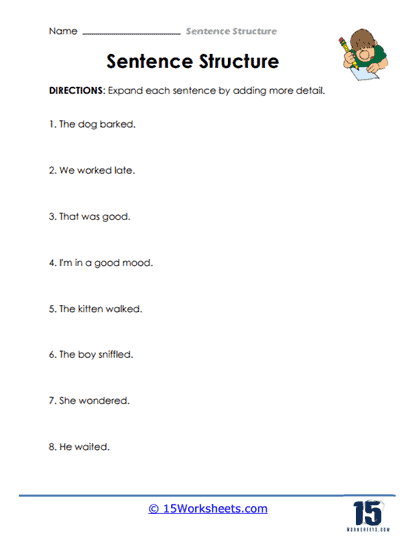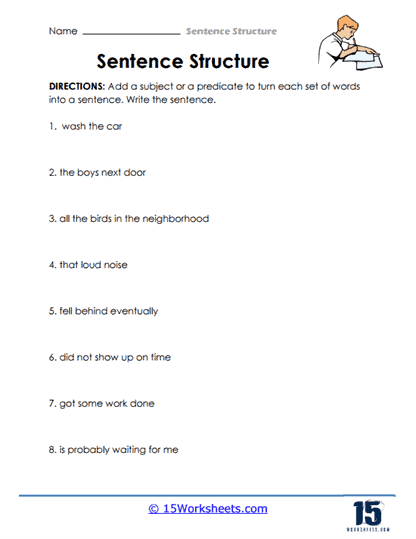Sentence Structure Worksheets
All About These 15 Worksheets
These worksheets contain exercises and activities focused on various aspects of sentence structure, such as word order, sentence types, clauses, phrases, and sentence combining. The purpose of is to provide students with opportunities to analyze and manipulate sentences, enabling them to develop a stronger grasp of how sentences are formed and how different elements work together. By working through these worksheets, individuals can enhance their writing skills, sentence variety, and overall communication proficiency. Here are the types of exercises that you will come across:
Type Identification – Learners are given a set of sentences and are asked to identify the sentence type (declarative, interrogative, imperative, or exclamatory).
Example – “Close the door.” – Imperative sentence
Sentence Combining – Individuals are provided with multiple simple sentences and are tasked with combining them into more complex sentences using conjunctions, relative clauses, or other sentence structures.
Example – “I went to the store. I bought some groceries.” – Combined sentence – “I went to the store and bought some groceries.”
Rearrangement – Learners are given a sentence with words or phrases in the wrong order, and they need to rearrange the elements to form a grammatically correct sentence.
Example – “Yesterday, my friend to the party came.” – Corrected sentence – “Yesterday, my friend came to the party.”
Clause and Phrase Identification – Individuals are presented with sentences and asked to identify the different clauses or phrases within them.
Example – “I saw a bird that was singing beautifully.” – Clause identification – “I saw a bird” (main clause), “that was singing beautifully” (relative clause).
What are the 5 Elements of Sentence Structure?
Subject – The subject is the noun or pronoun that performs the action or is being described in the sentence. It tells us who or what the sentence is about.
Example – Sarah runs every morning. (“Sarah” is the subject.)
Verb – The verb is the action or state of being in the sentence. It expresses what the subject is doing or the condition it is in.
Example – Sarah runs every morning. (“runs” is the verb.)
Object – The object is the noun or pronoun that receives the action of the verb or is affected by it. It answers the question “whom” or “what” after the verb.
Example – Sarah drinks water. (“water” is the object.)
Adjective – An adjective is a word that describes or modifies a noun or pronoun, adding more detail or information about it.
Example – The blue sky is beautiful. (“blue” is the adjective.)
Adverb – An adverb is a word that describes or modifies a verb, adjective, or other adverb. It provides information about how, when, where, or to what extent an action is performed.
Example – She sings beautifully. (“beautifully” is the adverb.)

